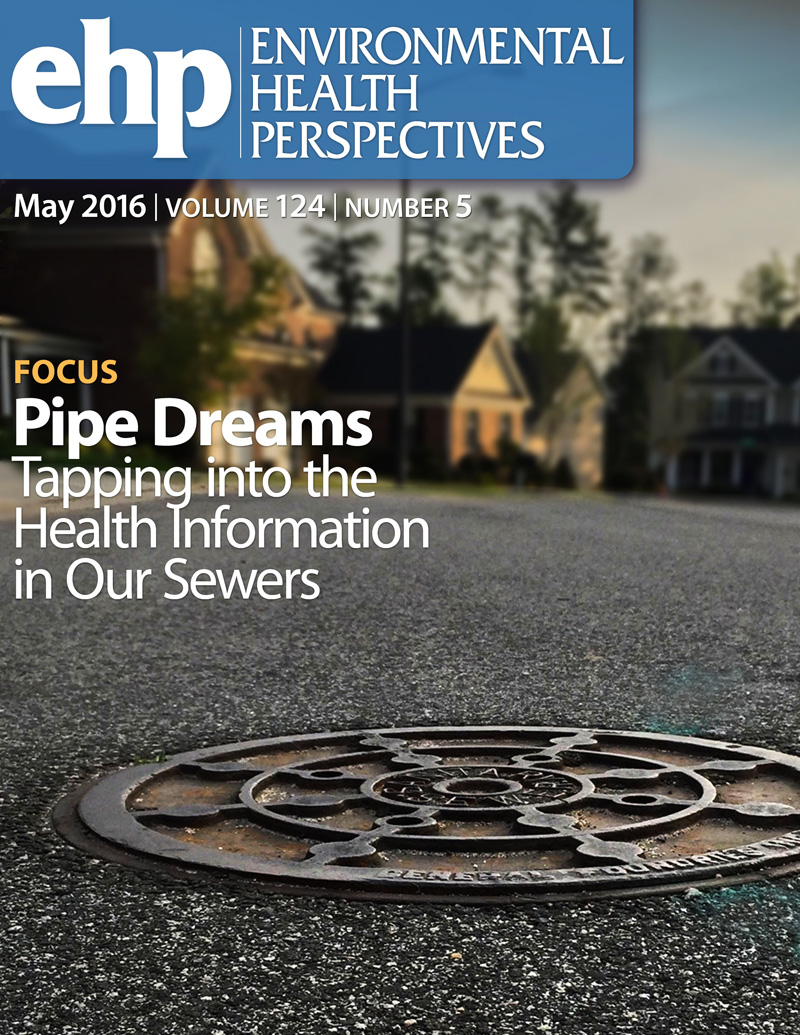比较相对湿度和绝对湿度在热相关死亡率中的作用:韩国的一个病例时间序列研究。
IF 9.8
1区 环境科学与生态学
Q1 ENVIRONMENTAL SCIENCES
引用次数: 0
摘要
尽管有很强的生理合理性,但流行病学研究报告了湿度与热相关健康结果之间不一致的关联。在这方面,在流行病学研究中使用哪种湿度测量法一直存在激烈的争论。目的:本研究旨在利用全国死亡率数据集比较两种常见湿度指标——相对湿度和绝对湿度在夏季热相关死亡率中的作用。方法采用病例时间序列设计,研究2011年至2019年韩国229个地区夏季(6月至9月)的死亡率。温度采用分布滞后非线性模型(DLNM)拟合,滞后10天。每个模型都包含了温度和湿度交叉基础之间的线性相互作用,以检验湿度水平(低湿度和高湿度由每个湿度分布的第5和第95百分位定义)与热量和死亡率之间的不同关联模式。结果2011年至2019年夏季,韩国共记录了780102例死亡病例。极端高温(温度大约高于温度分布的第99百分位)与死亡率之间的关系受绝对湿度的影响大于相对湿度,尽管这两种湿度指标的影响变化没有统计学意义。在99.9百分位温度下,低、高相对湿度与最低死亡温度的相对危险度(95%置信区间)分别为1.21(1.11、1.31)和1.22(1.03、1.44),低、高绝对湿度与最低死亡温度的相对危险度分别为1.11(0.89、1.37)和1.25(1.15、1.34)。我们的研究结果为相对湿度和绝对湿度在热相关死亡率中的作用提供了流行病学证据,并表明在评估健康影响时,绝对湿度可能比相对湿度更合适。https://doi.org/10.1289/EHP15827。本文章由计算机程序翻译,如有差异,请以英文原文为准。
Comparing the role of relative and absolute humidity in heat-related mortality: A case time series study in South Korea.
BACKGROUND
Despite strong physiological plausibility, epidemiology studies have reported inconsistent associations of humidity with heat-related health outcomes. In this regard, there has been a heated debate on which humidity metric to use in epidemiological research.
OBJECTIVES
This study aimed to compare the role of two common humidity metrics, relative and absolute humidity, in heat-related mortality in summer using a nationwide mortality dataset.
METHODS
We applied a case time-series design for summer (June to September) mortality across the entire 229 districts of South Korea from 2011 to 2019. The temperature was fitted using a distributed lag non-linear model (DLNM) with 10 lag days. A linear interaction between the cross-basis of temperature and humidity was included in each model to examine the different patterns of association between heat and mortality by humidity level (low and high humidity defined by 5th and 95th percentile of each humidity distribution).
RESULTS
A total of 780,102 deaths were recorded in the summer from 2011 to 2019, in South Korea. The association between extreme heat (temperature approximately above the 99th percentile of the temperature distribution) and mortality was modified more by absolute humidity than by relative humidity, although the effect modification of both humidity indicators was not statistically significant. The relative risks (95% confidence interval) at the 99.9th percentile temperature compared to the minimum mortality temperature were 1.21 (1.11, 1.31) and 1.22 (1.03, 1.44) for low and high relative humidity, respectively, and 1.11 (0.89, 1.37) and 1.25 (1.15, 1.34) for low and high absolute humidity, respectively.
DISCUSSION
Our findings provide epidemiological evidence on the role of relative and absolute humidity in heat-related mortality and suggest that absolute humidity may be more appropriate metric than relative humidity when assessing health impact.. https://doi.org/10.1289/EHP15827.
求助全文
通过发布文献求助,成功后即可免费获取论文全文。
去求助
来源期刊

Environmental Health Perspectives
环境科学-公共卫生、环境卫生与职业卫生
CiteScore
14.40
自引率
2.90%
发文量
388
审稿时长
6 months
期刊介绍:
Environmental Health Perspectives (EHP) is a monthly peer-reviewed journal supported by the National Institute of Environmental Health Sciences, part of the National Institutes of Health under the U.S. Department of Health and Human Services. Its mission is to facilitate discussions on the connections between the environment and human health by publishing top-notch research and news. EHP ranks third in Public, Environmental, and Occupational Health, fourth in Toxicology, and fifth in Environmental Sciences.
 求助内容:
求助内容: 应助结果提醒方式:
应助结果提醒方式:


